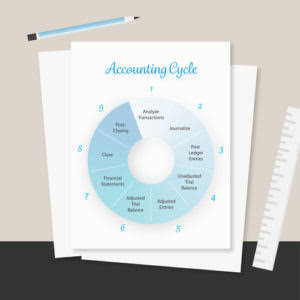
Manufacturing overheads used in calculating conversion costs are the overheads that cannot be attributed to the production process or a single unit in production, for example, rent or electricity. Upon further analysis, it is discovered that the variance is primarily due to an increase in labor costs. The company can then explore ways to streamline the labor-intensive processes, negotiate better labor rates, or implement training programs to enhance workforce productivity and reduce conversion costs. This article delves into the definition, formula, and examples of conversion costs, illustrating their importance in cost accounting and production management.
- Beginning WIP units get lumped in with all “Completed Units” as if they had no work at all done last period.
- This can increase the total conversion cost of producing a product as maintenance costs are included in manufacturing overhead costs.
- Manufacturing facilities can be significant energy consumers, and reducing energy consumption can help manufacturers reduce their conversion costs.
- You could use that information as an inspiration to make changes and see if you can improve it.
- If the contract manufacturer produces products that do not meet the outsourcing company’s quality standards, this can increase rework, scrap, and customer returns costs.
Financial and Managerial Accounting
Companies often use software like SAP or Oracle to accurately track and allocate these overhead costs. The calculation for conversion costs includes direct labor in addition to overhead expenses. By understanding and managing these costs effectively, businesses can thrive in a dynamic manufacturing environment. Yes, conversion costs can change based on factors like labor rates, overhead expenses, and efficiency improvements. In the table above, the direct labor costs for each employee are calculated by multiplying the total hours worked by the hourly wage rate and adding any additional benefits or allowances. The total direct labor cost for all employees is then summed up to obtain the overall direct labor cost for the specified period.
Cash Flow Management – Why is Conversion Cost Important in Manufacturing
In process costing systems, conversion costs are averaged across units produced, ensuring consistent cost allocation. Tracking conversion costs helps identify inefficiencies in the production process, such as excessive overhead or underutilized labor. Management needs to understand its costs in order to set prices, budget for the upcoming year, and evaluate performance. I assume materials are added at the beginning conversion costs of the process, so ending WIP units are 100% complete with respect to direct materials and transferred-in costs.

How to Use the Conversion Cost Information for Decision Making and Management?
- I phrase this equation in the singular (i.e. “unit”), but process costing firms usually calculate equivalent units for groups of units, rather than for individual units.
- This means the manufacturer spent $8000 on converting raw materials into finished products during the month.
- Remember that small adjustments can yield significant results, so experiment, learn, and adapt to stay ahead in the competitive landscape.
- How to use conversion cost for management purposes, such as setting prices, budgeting, and performance evaluation.
- We’ll start by defining conversion cost, why it is crucial in manufacturing, and its advantages and disadvantages.
- Conversion cost per unit is the average cost of converting one unit of product from raw materials to finished goods.
If the business is focused on the intensive conversion of raw materials to products, then conversion costs can give better results. In contrast, if the business regularly invests a big chunk of its expense on raw materials, Prime costs can provide a better overview. Accounting Periods and Methods Both provide an overview of the company’s expenses that affect the production process and help the company make favourable financial decisions. Conversion costs play a significant role in determining the overall cost structure of manufacturing operations. By understanding and effectively managing these costs, businesses can enhance their competitiveness, improve profitability, and make informed decisions regarding production processes.
Prime Costs
Conversion cost is one of the most basic accounting tasks in almost all the major business sectors. Conversion costs reflect a company’s total amount spent converting raw materials into fully-furbished products. It includes the direct labour costs and the amount spent on indirect factors like electricity bills, factory rent, etc., which cannot be directly traced down to the production of a single unit. Conversion costs are beneficial, especially for manufacturing businesses which have to deal with conversion on a large scale daily.

In a business that uses a high degree of automation, it is likely that manufacturing overhead costs will comprise the bulk of all conversion costs. Thus, conversion costs are all manufacturing AI in Accounting costs except for the cost of raw materials. It is the direct labor plus any manufacturing overheads needed to convert raw materials into a finished product.

Let’s assume a unit in ending WIP is about halfway through the process of completion. It would be natural to assume it is about 50% complete (and thus equal to 0.5 equivalent units). The cost of manufacturing a product cannot be traced to just one unit in the process. Some common examples are insurance, building maintenance, machine breakup, and taxes on equipment or machining. Conversion costs are vital to be calculated by each companysince they are fundamental for making important business decisions and carryingout basic accounting tasks. This means that the company spent $9 on converting each unit of the product.

These variations can impact the time and resources required to produce a product, affecting the calculation of conversion costs. Understanding the conversion cost is crucial for managing cash flow effectively. By knowing the total cost of production, manufacturers can accurately forecast their expenses and plan accordingly. This helps avoid cash flow problems and ensures that the business has enough cash to cover its expenses. Process costing firms usually have several departments that products must pass through before they’re complete. For responsibility accounting purposes these departments costs should be kept separate.